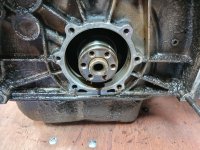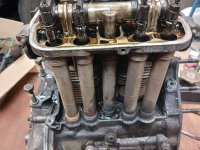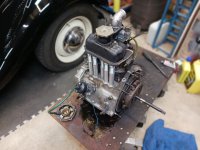Greetings fellow Fiat 500 enthusiasts.
I've taken the engine and gearbox out as I intend to fiat a 126 box (Mrs A isn't too keen to drive it without synchro).
Significant amount of oil in and around the bellhousing, and a lot of old oil all the way forward externally on the gearbox.
I'd think crankshaft oil seal, but the clutch is dry.
Any ideas?
Is it hard to get to the crankshaft oil seal?
Thanks!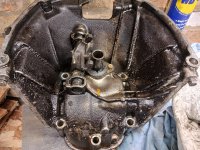
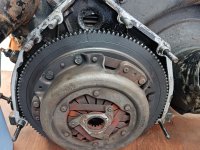
I've taken the engine and gearbox out as I intend to fiat a 126 box (Mrs A isn't too keen to drive it without synchro).
Significant amount of oil in and around the bellhousing, and a lot of old oil all the way forward externally on the gearbox.
I'd think crankshaft oil seal, but the clutch is dry.
Any ideas?
Is it hard to get to the crankshaft oil seal?
Thanks!




